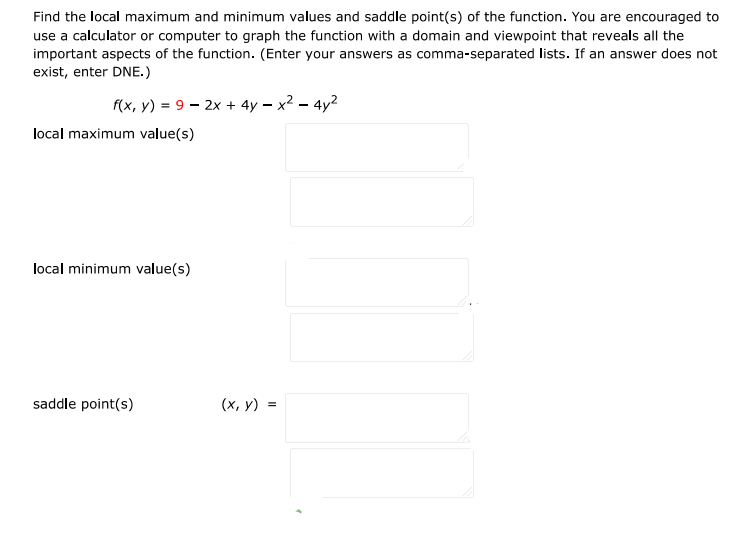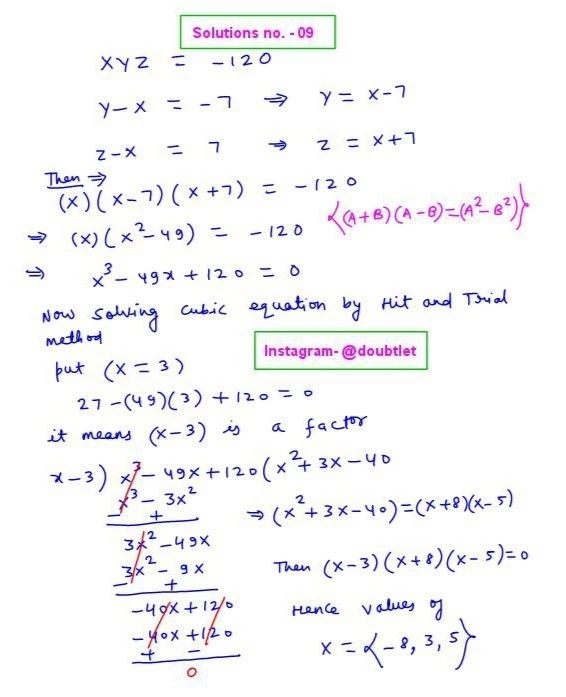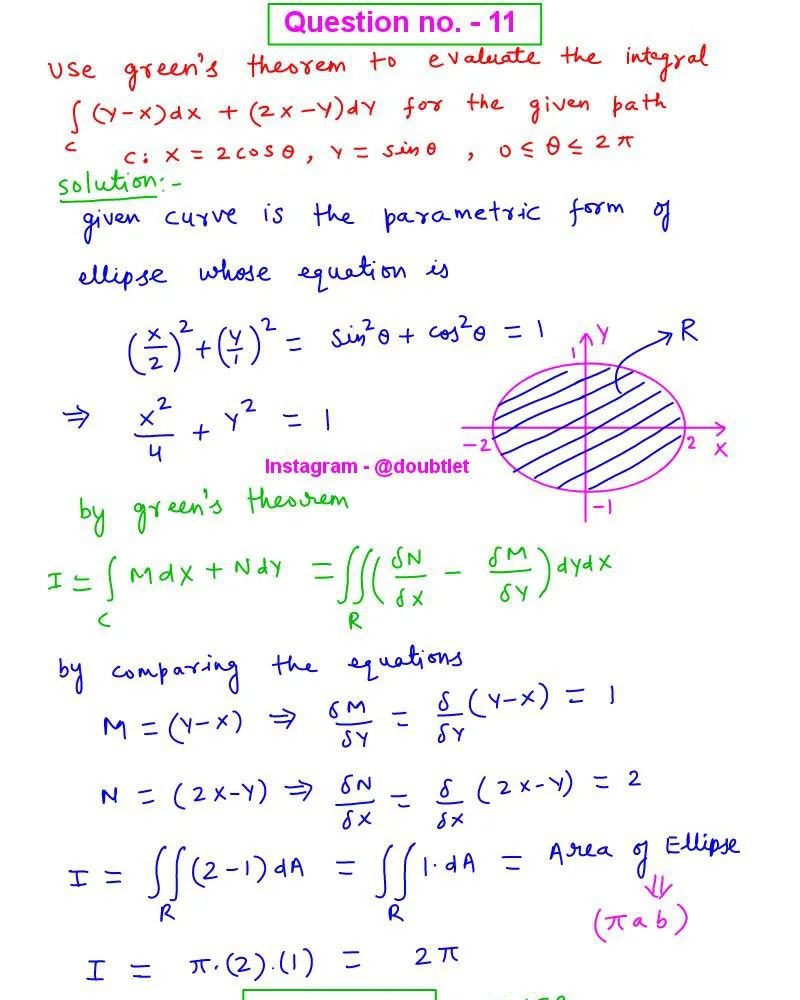









Find the local maximum and minimum values and saddle point(s) of the function. You are encouraged to use a calculator or computer to graph the function with a domain and viewpoint that reveals all the important aspects of the function. (Enter your answers as comma-separated lists. If an answer does not exist, enter DNE.)
- Local maximum value(s):
- Local minimum value(s):
- Saddle point(s)
Find the local maximum and minimum values and saddle point(s) of the function. You are encouraged to use a calculator or computer to graph the function with a domain and viewpoint that reveals all the important aspects of the function. (Enter your answers as comma-separated lists. If an answer does not exist, enter DNE.)
- Local maximum value(s):
- Local minimum value(s):
- Saddle point(s)
Question :
Find the local maximum and minimum values and saddle point(s) of the function. you are encouraged to use a calculator or computer to graph the function with a domain and viewpoint that reveals all the important aspects of the function. (enter your answers as comma-separated lists. if an answer does not exist, enter dne.)
- local maximum value(s):
- local minimum value(s):
- saddle point(s)

Solution:

Neetesh Kumar | November 30, 2024
Calculus Homework Help
This is the solution to Math 1D
Assignment: 14.7 Question Number 1
Contact me if you need help with Homework, Assignments, Tutoring Sessions, or Exams for STEM subjects.
You can see our Testimonials or Vouches from here of the previous works I have done.
Step-by-step solution:
Step 1: Partial derivatives
To find critical points, calculate the partial derivatives of with respect to and .
-
Partial derivative with respect to :
-
Partial derivative with respect to :
Step 2: Solve for critical points
Set and to find the critical points.
-
From , solve for :
-
From , solve for :
Thus, the critical point is:
Step 3: Second partial derivatives
Compute the second partial derivatives to classify the critical point.
Step 4: Discriminant test
The discriminant is given by:
Substitute the values:
Since and , the critical point is a local maximum.
Step 5: Local maximum, minimum, and saddle points
-
Local maximum value(s): Substitute into :
Therefore, the local maximum value is:
-
Local minimum value(s): There are no local minima since at the critical point, indicating a local maximum.
-
Saddle point(s): There are no saddle points because and the critical point is classified as a local maximum.
Final Answer:
Local maximum value(s):
Local minimum value(s):
Saddle point(s)
Please comment below if you find any error in this solution.
If this solution helps, then please share this with your friends.
Please subscribe to my Youtube channel for video solutions to similar questions.
Keep Smiling :-)
Comments(0)



Leave a comment